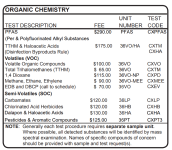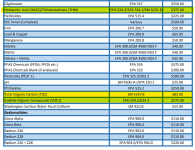You are still getting CCs, so it is difficult to tell if you are getting close to the end.
The bucket test can help determine the total amount of chlorine that it will take, but you have to do it carefully.
It's tedious to do and it uses a lot of reagent, so it depends on how important it is to know the amount of chlorine it will take vs. just finishing the SLAM.
The bucket test can help determine the total amount of chlorine that it will take, but you have to do it carefully.
It's tedious to do and it uses a lot of reagent, so it depends on how important it is to know the amount of chlorine it will take vs. just finishing the SLAM.











